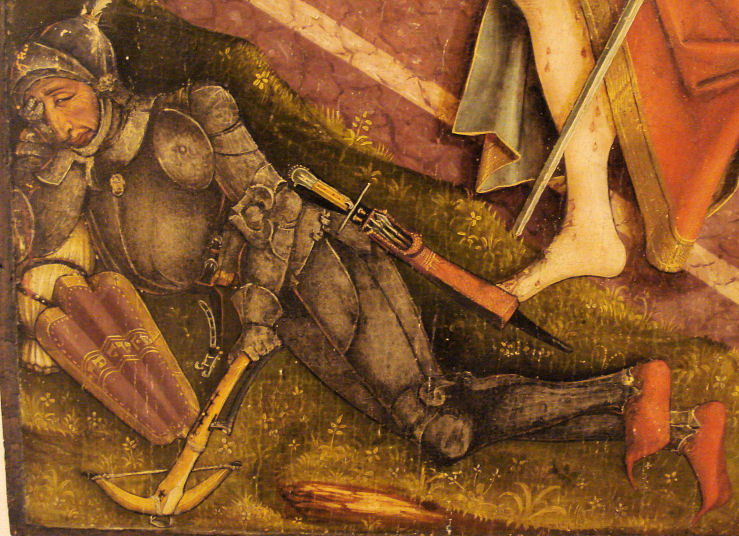Is this possibly a combined quiver/scabbard? If so, would it have been practical? Would its 'multifunction' benefits have been outweighed by the fact that it looks like it would not hold many bolts? (The image shows three; even allowing for a double-row, six is not much...)
And, if these were indeed historical, does anyone know of a modern reproduction?
If not, it seems odd that the artist would have chosen to depict the quiver so neatly aligned and centred on top of the scabbard - both lengthwise and widthwise, seeing as the other elements look a little 'scattered' on the ground ...
What do y'all think? It has me intrigued ...
Despite the lack of firepower, the compactness of this design, and the 'one-less-thing-flapping-around-on-the-kit-belt' factor has me really tempted to get Tod to make one of these! :cool:



 [/img]
[/img]